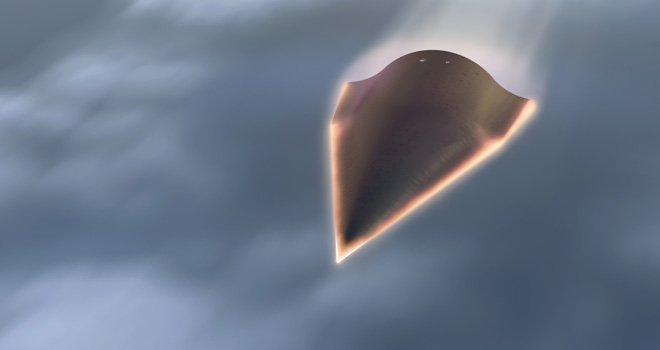The U.S. Defense Advance Research Projects Agency on Thursday launched the second of its hypersonic flight tests, and promptly lost contact with it. The test is part of a long-term project to create a craft that can travel across the globe in an hour.
The unmanned craft, called the Falcon Hypersonic Technology Vehicle (HTV-2,) launched at around eight in the morning West Coast time from the Vandenberg Air Force Base in California.
The plan was to launch the vehicle on an Air Force Minotaur IV rocket and to guide it to the edge of space, before the plane separates and travels at the speed of 13,000 miles per hour (about 20 times the speed of sound) on its way back to Earth, where it’ll fall into the ocean.
DARPA said in a statement that the goal of this mission is to fine-tune technical challenges in aerodynamics, aerothermal effects, navigation and control. Engineers adjusted the vehicle’s center of gravity, changed some of the dynamics of the flight, and included a system to better control the flight flaps to try and maintain better stability during flight.
As of Thursday morning, it’s not clear whether any of that helped. DARPA has been tweeting about the launch Thursday morning, and reported shortly after the launch that it had lost contact with the craft. (But it did reach its “glide phase.) About an hour after that, another tweet read: “Downrange assets did not reacquire tracking or telemetry. #HTV2 has an autonomous flight termination capability.”
The project started off in 2003 as a military research project to build a craft that could reach any place in the world in less than an hour.
DARPA says that it has to conduct the tests in real-life because computer simulations can’t tell them whether a vehicle can continue flying as it experiences extreme temperatures of more than 3,500 degrees Fahrenheit.
Last year’s test flight in April ended after just nine minutes when an onboard computer detected that something was wrong and caused the craft to abort its mission and plunge into the ocean prematurely.
That craft traveled for just over two minutes at Mach 22, which is 16,700 miles per hour.









